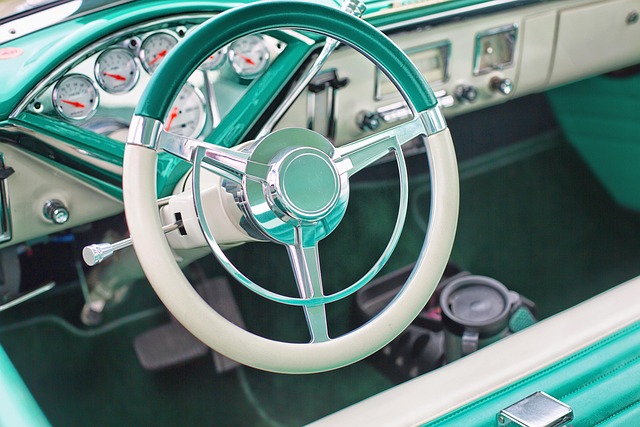Looking to register your car in California? This comprehensive guide walks you through the entire process, from understanding the DMV’s VIN verification to gathering essential documents and common issues. Learn step-by-step how to register your vehicle smoothly. We also offer aftercare tips for maintaining your registered car in the Golden State, ensuring a hassle-free experience with focus on dmv vin verification.
- Understanding the DMV VIN Verification Process
- Gathering Necessary Documents for Car Registration
- Step-by-Step Guide to Registering Your Vehicle in California
- Common Issues and How to Resolve Them During Registration
- Aftercare: Maintaining Your Registered Vehicle in California
Understanding the DMV VIN Verification Process

When registering your car in California, understanding the DMV’s VIN (Vehicle Identification Number) verification process is crucial. This involves a thorough inspection to ensure the vehicle’s authenticity and history. The process typically requires you to present the car for a physical examination at a designated DMV location. During this time, an examiner will check various components of your vehicle, including the VIN itself, which is usually located on the dashboard or near the door frame.
A mobile vin verifier can be particularly useful in California, as it allows for a more convenient and flexible inspection process. These services offer remote or on-site vin inspection, enabling you to verify your car’s details without the hassle of visiting a DMV office. By utilizing these modern tools alongside the traditional vin verification methods at the DMV, you can streamline the registration process and ensure a smoother experience.
Gathering Necessary Documents for Car Registration

Before you start the registration process, it’s crucial to gather all the essential documents required by the California Department of Motor Vehicles (DMV). This includes your vehicle’s Registration Application (Form DMV-123), a valid driver’s license or identification card, proof of insurance, and perhaps the most critical document for car registration—the Vehicle Identification Number (VIN) verification. The DMV conducts a VIN inspection to ensure the vehicle’s authenticity and history, which is a vital step in the registration process.
For convenience, many California residents opt for a mobile VIN inspection or verification service. These services allow you to obtain the necessary VIN information quickly without visiting a DMV office. By having all your documents ready, including the vehicle’s title (if applicable), you’ll streamline the car registration process and ensure a smoother experience when dealing with the DMV.
Step-by-Step Guide to Registering Your Vehicle in California

Registering a car in California involves several steps that can be streamlined with proper preparation and knowledge. Start by gathering all necessary documents, including your vehicle’s registration certificate from the previous state, proof of insurance, and a valid driver’s license. Next, visit the California Department of Motor Vehicles (DMV) website to access their online services or schedule an in-person appointment. During this process, you’ll be required to undergo a DMV VIN verification, which involves cross-checking your vehicle’s unique identifier against their records to ensure it’s not stolen or has any outstanding issues.
Once your VIN inspection is complete and all documents are in order, submit them along with the required fees. For convenience, consider opting for a mobile vin inspection service that brings the DMV services to you, saving time and effort. This streamlined process ensures that by the end of it, you’ll have a registered vehicle with a California license plate, ready to hit the road legally and with peace of mind.
Common Issues and How to Resolve Them During Registration

When registering your car in California, common issues can arise that delay the process or require additional steps. One frequent problem is a failed DMV VIN verification, often due to data inaccuracies or discrepancies between the vehicle’s records and its physical attributes. To resolve this, ensure all information provided matches the car’s actual specifications, including the Vehicle Identification Number (VIN). Double-check the make, model, year, and other details with your vehicle’s documents and the mobile VIN verification tools available for quick cross-referencing.
Another challenge could be issues with prior ownership records or outstanding financial obligations on the car. For instance, if a vin inspection reveals a lien holder not listed in California’s database, you’ll need to contact that party to clear the matter before proceeding with registration. Efficiently addressing these problems early in the process ensures a smoother registration experience and prevents further delays.
Aftercare: Maintaining Your Registered Vehicle in California

After successfully registering your vehicle with the DMV, maintaining proper care is crucial to keep your car in good condition and ensure a smooth registration process in the future. California requires all vehicles to undergo regular inspections, which often involve a DVMA (Department of Motor Vehicles) vin verification, to check for safety standards and emission compliance. This process can be conveniently done at many service centers across the state, including some that offer mobile vin inspection services for your convenience.
Regular maintenance also includes keeping up with oil changes, tire rotations, and brake inspections, as these components are vital for safe driving. Additionally, ensure that any modifications made to your vehicle meet California’s legal standards, which can be checked through a simple DVMA vin inspection. By staying on top of these tasks, you’ll not only extend the life of your vehicle but also streamline future registration renewals.
Registering a car in California is a straightforward process, but understanding each step is key to avoiding delays. From gathering essential documents to navigating the DMV’s VIN verification process, this guide has empowered you with the knowledge to successfully register your vehicle. Remember that keeping your paperwork up-to-date and addressing any issues promptly will ensure a smooth experience. With these steps in mind, you’re now ready to hit the road legally and enjoy your well-registered California vehicle.



